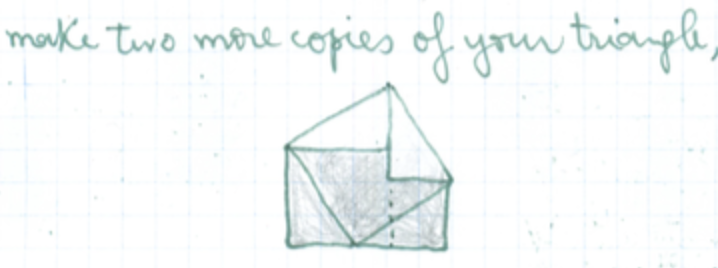Hello, everyone!
I have news: two new Lab Gear books, and two Northern California appearances. There is more info at the end of this issue the newsletter. Click here if you're in a hurry to find out about them.
Just read on if you want to start with the usual links to new items on my blog and Web site.
Hoping to see some of you soon!

Blog Posts
Here are links to posts on my Math Education Blog that you might find interesting.
If you are so moved, you may comment on the posts, and/or subscribe to the blog.
About Hints, the sequel
In a previous post, I argued that effective teaching requires navigating skillfully between the "sage on the stage" and the "guide on the side" roles. I follow up on this here, by discussing a classroom example, and an example from my own struggles with a tough problem. I claim that generic hints (such as "try a simpler problem" or "what do you notice?") are often insufficient, and that we should not shy away from supporting student exploration more assertively.
Geometric Construction for Middle School
Once again, I argue that geometric construction deserves a more central place in the curriculum. My reasons should appeal to you whether you appreciate the long history of this particular branch of math, or the magnificent problem-solving opportunities it offers, or the role it can play in developing a logical foundation for a transformational approach to high school geometry. The post includes links to a middle school version of my geometric construction unit, and to my other writings on this subject. Click here.
Pythagoras: Handwritten and Hand-Drawn

Call me old-fashioned: I hand-wrote a blog post! In it, I guide students through a proof of the Pythagorean theorem by suggesting a step-by-step approach on grid paper. In spite of my terrible handwriting, this turned out to be one of my most popular posts ever! Check it out. (And don't worry, I have not turned my back on contemporary tools. Here is an applet that makes the same argument. However, I insist: only show it to students after doing the activity on graph paper, and follow it up by asking for a write-up of the argument!)
Learning Styles, Teaching Styles
Apparently, research shows that "learning styles", whatever they are, do not provide us with approaches that are especially appropriate to specific students. (If you want to find out more about this, the Wikipedia page on Learning Styles includes several relevant links.) Nevertheless, I still advocate teaching important concepts using multiple modes, including e.g. visual or kinesthetic. Read my post here, and from there click to a follow-up guest post by Michael Goldenberg.
MathEducation.page
New on my Web site.
Triangle Congruence and Similarity Again
- I tweaked my documents on a transformational approach to triangle congruence and similarity, based on feedback I received from Bill McCallum (of Tools for the Common Core Standards.) If you downloaded earlier versions, please delete them and replace them with the current versions.
- - Version 1 (more opinionated and footnoted)
- - Version 2 (co-authored with Lew Douglas, better section on similarity)
- The main change is to the SAS proof, which did not correspond to its illustration.
- Relevant blog posts:
- - Rethinking Triangle Congruence and Similarity
- - Triangle Similarity Update
- - Perpendicular Bisector Theorem
